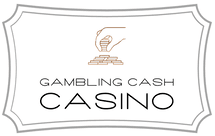All-In bets in horse racing require a strategic approach rather than relying solely on chance. These bets involve placing wagers on a single horse to win, place, or show in a particular race. Successful bettors often analyze past performance, track conditions, jockey and trainer statistics, and other relevant factors to make informed decisions.
One common strategy is to assess the odds offered on each horse and calculate the potential payoff based on different betting scenarios. This allows bettors to weigh the risk versus reward before placing an All-In bet.
Some experienced bettors also consider the betting patterns of other bettors to gauge the confidence in a particular horse.
It’s important for bettors to manage their bankroll effectively when making All-In bets, as the stakes are high, and a single wager can have a significant impact on their overall betting strategy. Learning from both successful and unsuccessful bets can help bettors refine their strategies and improve their chances of making profitable decisions in future races.
Overall, All-In bets in horse racing require a combination of skill, analysis, and risk management to be successful. By carefully evaluating the factors influencing each race and making calculated decisions, bettors can enhance their chances of achieving favorable outcomes in these high-stakes situations.
The Thrill of Going All-In
Experience the competitive world of horse racing, where strategic decisions and athletic performances shape the outcome of races. As the horses sprint down the track, spectators witness a display of speed, agility, and stamina. Every move made by jockeys and horses is crucial, determining the race’s results.
The ambiance is filled with anticipation as the crowd observes the competition unfold. Horse racing enthusiasts analyze factors such as form, track conditions, and jockey skills to predict outcomes. The sport’s popularity stems from its rich history and the skill required by both horse and rider to succeed.
It’s a sport where precision, training, and a bit of luck all play a role in determining the victor.
Calculating Risk vs. Reward
In horse racing, the assessment of risk versus reward plays a crucial role due to the significant implications involved. Prior to making substantial bets, it’s imperative to carefully evaluate the potential outcomes in comparison to the probability of success.
Factors to consider when gauging risk include the current form of the horse, track conditions, level of competition, and the performance history of the jockey. Equally important is understanding the potential rewards, which involves analyzing the odds, the prize pool size, and the expected payout.
Strategies for All-In Betting
To enhance the potential outcomes of all-in betting in horse racing, strategic approaches play a crucial role. Evaluating the probabilities and choosing horses with consistent performance histories are fundamental considerations before placing an all-in bet. A recommended strategy involves analyzing past race results to identify patterns in horses’ performances.
Furthermore, assessing jockeys’ success rates and trainers’ track records can offer valuable insights for making well-informed decisions. Diversifying bets across various races can help mitigate risks and improve the likelihood of a favorable result.
Staying informed about industry news, track conditions, and weather forecasts is essential for gaining a competitive advantage. By methodically planning and executing all-in bets, participants can potentially enhance their overall horse racing experience and achieve significant rewards.
Famous All-In Bet Moments
In horse racing history, significant moments have occurred when all-in bets resulted in remarkable outcomes. One notable event is Secretariat’s victory in the 1973 Belmont Stakes. Facing the challenge of the Triple Crown, bettors who went all-in on Secretariat witnessed his remarkable performance, winning by an unprecedented 31 lengths and setting a world record time that remains unmatched.
Another noteworthy instance was Mine That Bird’s unexpected win in the 2009 Kentucky Derby. Despite being a 50-1 underdog, Mine That Bird surprised the racing community with his triumph. Those who placed all-in bets on Mine That Bird benefited from his surprising victory, demonstrating the potential for high rewards in horse racing with strategic high-stakes betting.
Managing Emotions in High Stakes
Managing emotions in high-stakes situations, such as horse racing’s pivotal moments, is essential for both bettors and enthusiasts. The outcome of a race can heavily rely on a single bet, leading to heightened emotions.
To navigate these situations effectively, it’s important to remain composed and avoid making rash decisions based on temporary feelings. Strategies like taking deep breaths, staying focused on the present, and recognizing that fluctuating outcomes are inherent to the excitement of horse racing can help.
Practicing self-awareness by acknowledging emotions without letting them control actions is crucial. By maintaining a calm demeanor and a rational mindset, individuals can make well-informed choices and fully appreciate the thrill of high-stakes races without being overwhelmed by emotions.
If you are interested in Unconventional Wagering Options, check out this article: https://gamblingcashcasino.com/2024/12/17/fun-bets-unconventional-wagering-options/
Conclusion
Reflecting on the high stakes involved in all-in bets in horse racing offers an opportunity to consider the strategic decisions and calculated risks inherent in the sport. Whether one is a jockey, horse owner, or spectator, the intense moments on the track provide a unique adrenaline rush. It is essential to maintain focus on managing emotions and employing smart strategies to navigate the unpredictable nature of high-stakes racing. The allure of going all-in extends beyond mere victory, encompassing the competitive journey and adrenaline-fueled experiences that define the sport.

